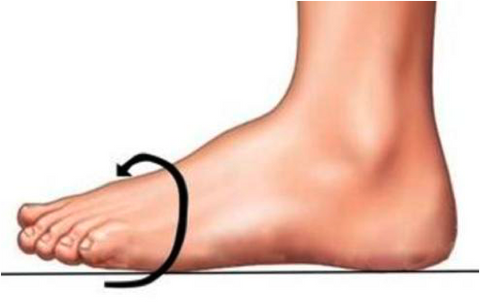How To Measure Your Feet for Skates
Step #1 Measuring the Length of Your Feet
It is best to measure the length of your feet while standing. If there is someone who can assist you in reading the measurements, that will help keep them accurate. Sometimes your foot will slip slightly if you need to bend down to read the measurement.
Begin by standing on the tape measure or ruler with your heel against the wall or a flat object. This will make sure that your measurements are true. Measure from the back of the heel to the tip of the longest toe (the longest part of the foot). It is best to measure your feet in inches as most figure skating brands base their sizing charts on measurements in inches. Brands like Edea and Risport, use the metric system, however, and will require measurement in mm. It is important to measure both feet. One foot may be longer than the other. Use the length of the longest foot and make sure you take your measurements in socks, tights or whatever you wear while skating.
It is very important to note that not all brands have the same sizing, so find your size using your length measurements for each brand of skate. Just because you are one size in one particular brand doesn't mean that you are going to be that size in every brand. Boots are lasted in different shapes to accommodate all the individual foot shapes, but can be adjusted for small issues or tender spots caused by a bunion, hammer toe, or prominent ankle bones.



Step #2 Measuring the Width of your Feet
To find your width, measure the circumference of the ball of the foot in inches. In other words, measure all the way around the widest part of the foot. If you only measure the bottom flat part of your foot, then you will not be able to determine your skate width. All of the manufacturer's figure skate sizing charts for width are based on the circumference measurements. Place the tape measure so that it crosses directly over the joint behind the large toe (often referred to as the bunion) and the joint just behind the small toe. This will usually cause the tape to be positioned at an angle.

Again, make sure that you measure both feet. It is important to note irregularities when choosing the proper width boot. If you are getting a very wide measurement because you have a large bunion on one foot, take that into consideration. Boots can be “punched” and adjusted to make those individual spots comfortable, but you do not want to go too wide, causing there to be too much room in the opposite boot.
Step #3 Consider your arch and instep shape
If possible, have someone take some photos of your feet showing the arches and another showing a back view of the heels when standing with equally balanced weight. This will help you choose the proper boot which will provide arch support; keep in mind that boots are shaped differently and it is important to find the properly shaped boot for the most comfortable fit. These photos will also help determine blade position when mounting for proper weight distribution.
Step #4 Make sure that everything is recorded accurately.
Don’t round the numbers up or down. ½” difference can be a whole size. However, if you are measuring a young skater and wish to take growth into account, record the first measurement accurately and go up ½ size when you choose the appropriate model. Remember purchasing boots that are too big will cause uncomfortable creases, premature breakdown and possible injury like blisters, raw tissue and heel spurs. It is possible to add an extra insole when allowing for growth room that will “snug” up the boot for a better fit. Insole can then be removed when feet grow. Purchasing boots which are too large also impedes progress with skills and puts blade picks positioned too far in front of the boot, often causing tripping.
For more information about figure skating equipment, read our other guides or contact us. We're always happy to help!
